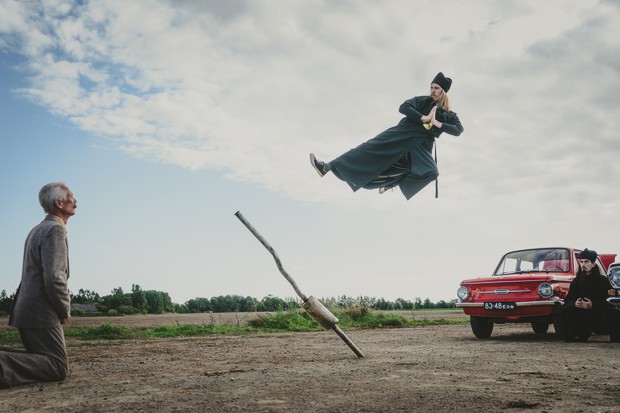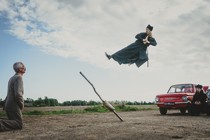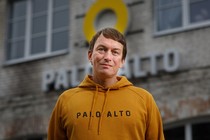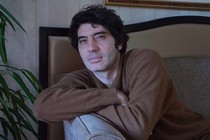Review: The Invisible Fight
- Rainer Sarnet’s hilarious third fiction feature goes back to Soviet times and fantasises about the peculiar parallel universes that might have co-existed with the official state narrative

After applying a Fassbinder-esque touch to Dostoyevsky’s philosophy in his debut feature, The Idiot (2011), and mixing up Baltic folklore and gothic grisliness in November [+see also:
film review
trailer
interview: Rea Lest
film profile] (2018), in his latest fiction work, The Invisible Fight [+see also:
trailer
film profile], freshly presented in the international competition of the Locarno Film Festival, Estonian helmer Rainer Sarnet deploys an explosive mix of kung fu, heavy metal and Orthodox Christianity, with snippets of the Soviet Estonian reality looming on the horizon. Perhaps it’s his background in animation that informs this tireless juggling between graphic styles and genres – a game that he clearly enjoys, reaching a loftier and more imaginative level with every passing film. Moreover, in The Invisible Fight, Sarnet uses stop-motion animation to great comic effect, such as when characters move along to the rhythm of the soundtrack and when we glimpse the hilarious sight of flying monks, while in other scenes, the mere act of blinking is accompanied by sound in a cartoon-like fashion. Such an approach elicits a feeling of Brechtian alienation on the one hand, making one ponder the conceptual idea behind this whole absurdist spectacle, while on the other whispers in one’s ear that one should really stop taking everything so seriously and simply enjoy the whimsical happenings on screen.
The plot is straightforward enough in order for the viewer not to get too distracted from spotting the entertaining details that pop up in tandem with its development. While completing his army service somewhere close to the USSR-Chinese border in 1973 – a probable reference to the mighty presence of Soviet Army garrisons at the Sino-Soviet border at the time, owing to the diplomatic split between the two nations – Rafael (Ursel Tilk) falls victim to a night-time kung-fu attack by Chinese invaders. This convinces him to learn kung fu once he gets back to civilian life. However, since “everything cool is banned in the Soviet Union”, he finds a chance for initiation in the martial arts behind, ironically enough, the thick walls of an Orthodox monastery inhabited by dissident monks, half of whom have been locked up at least once by the Soviet authorities. Rafael’s rebellious heavy-metal look, embellished with crosses, matches up well with the monks’ black outfits and long hair, and – to his mother’s horror – they gladly accept him, even recognising in him a possible successor to their guru Starets. This, in turn, provokes a rivalry between him and the devoted monk Irinei (Kaarel Pogga). Nevertheless, Rafael is not ready either to embrace humility or to silence the animal he nurtures inside himself, or even to cease flirting with demons, especially when they give off a whiff of Chanel No 5, like the girl at the local alcohol stand, Rita (Ester Kuntu). The invisible fight with the devil he carries within intensifies.
All of these trials and tribulations are intensified and enriched by stomping, grimacing, dancing, and speeding in Soviet cars, while the soundtrack sways between religious chants, Black Sabbath’s “The Wizard” and Estonian rock. Through the aforementioned visual and aural cacophony, Sarnet’s drive for absurdist humour and DoP Mart Taniel’s deft cinematographic eye for the comic conjure up an eclectic and colourful-but-coherent portrait of a Soviet realm constructed from multiple, subversive layers which, though they might deserve a political reading, could equally be seen simply as an entertaining universe to be observed and relished.
The Invisible Fight was produced by Estonia’s Homeless Bob Production, and co-produced by Latvia’s White Picture, Greece’s Neda Film and Finland’s Helsinki Filmi Oy.
Did you enjoy reading this article? Please subscribe to our newsletter to receive more stories like this directly in your inbox.






















